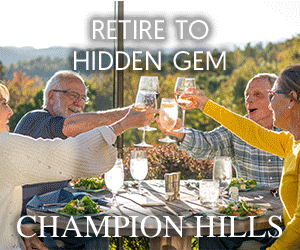 Lonnie Poole Golf Course has become a certified Audubon International Signature Golf Sanctuary and member of the organization’s Signature Program.
Lonnie Poole Golf Course has become a certified Audubon International Signature Golf Sanctuary and member of the organization’s Signature Program.
Charles Peacock, a professor in North Carolina State’s crop science department, emphasizes that the Signature Program is an elite Audubon International category. Peacock, who has worked for the past 15 years with close to 200 different Signature projects worldwide, said that only new locations are considered for Signature Program membership, making the certification particularly notable. There are only 92 other signature sanctuaries.
“It’s a very selective category,” Peacock said.
Established in 1996, Audubon International’s mission is to work with others to deliver high-quality environmental education and to facilitate the sustainable management of land, water, wildlife and other natural resources in all places people live, work and play.
The Poole Golf Course is one of only two university-owned golf courses to earn the honor among more than 90 projects that have received the certification.
The N.C. State golf course, opened in July 2009 and located on the school’s Centennial Campus, meets Audubon International qualifications due to careful planning to fit managed turfgrass seamlessly into the surrounding environment. The golf course also serves as a living lab for sustainable turfgrass management and environmental stewardship.
Danesha Seth Carley, sustainability program coordinator for the N.C. State College of Agriculture and Life Sciences, was integrally involved with the planning and construction of the golf course, saying that Audubon International certification was always the goal.
“The success of the golf course industry transition towards sustainability will depend, ultimately, on changing the awareness of sustainability issues within the industry and its clientele,” Seth Carley said. “Everyone must understand the relationship between their everyday lives and the resources on which they depend. This course is specifically designed to uphold these sustainability elements.”
Extensive, undisturbed vegetative buffer areas are among the golf course’s distinguishing features. These buffers include mixtures of fine fescue and native warm-season grasses, loblolly pines, American beautyberry and butterfly weed. It is not uncommon for golfers to see deer, beaver and even foxes during a round of golf.
“These buffers were integral to the design and were a big part of what allowed us easy Audubon International certification,” Seth Carley said.
















